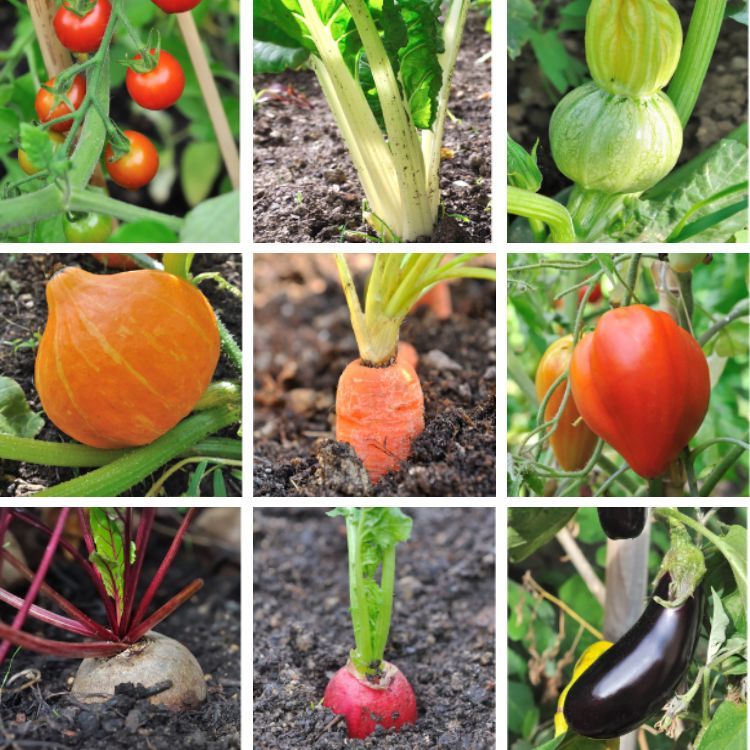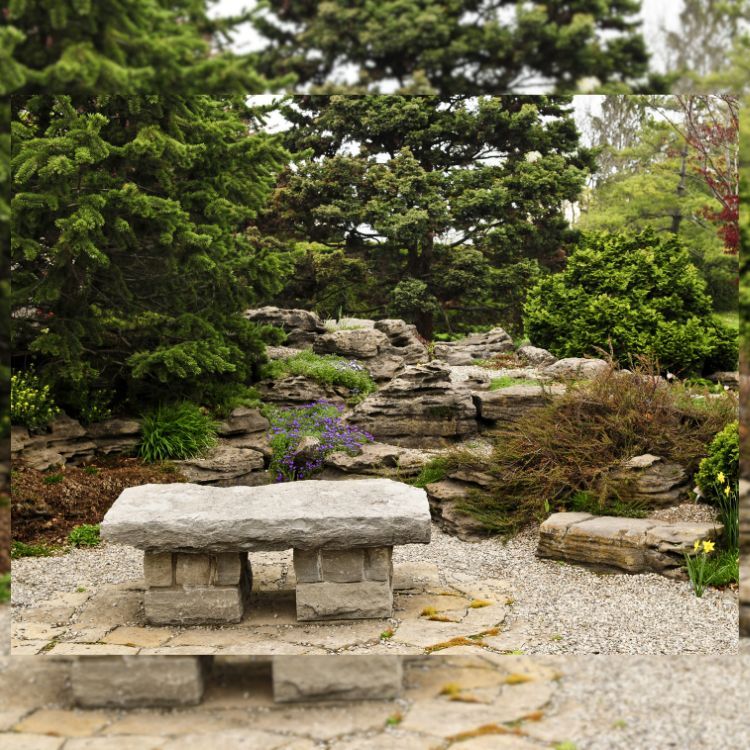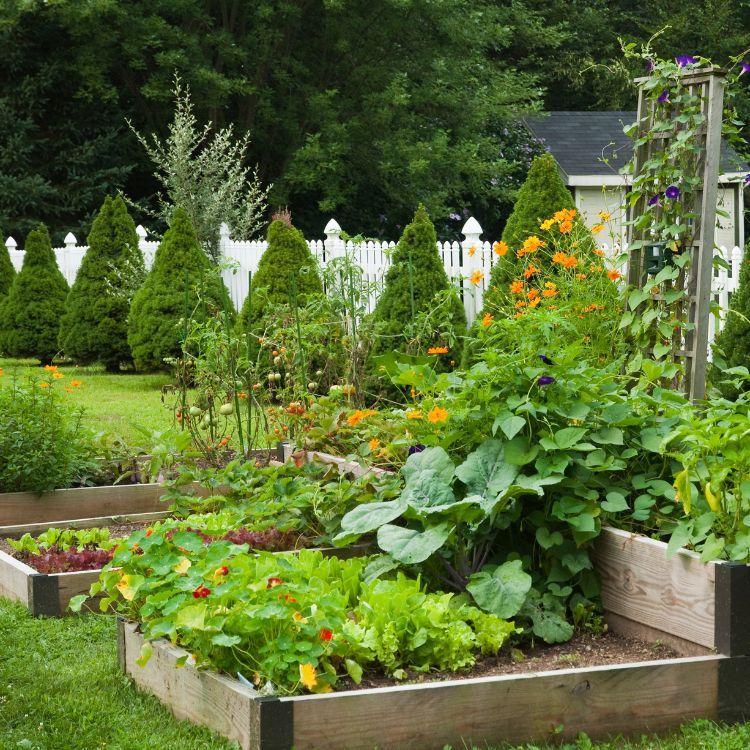
Imagine stepping into a space where every leaf, stone, and pathway leads to a deeper sense of peace and readiness. That’s the heart of a Zen survival garden—a place that nurtures both your soul and your sustenance. With the right approach, you can cultivate a garden that is not just a refuge from the outside world, but also a resilient source of food and medicine. Let’s dive into how to create this harmonious haven in your own backyard.
Key Takeaways
Understand the philosophy of Zen gardening to create a space of tranquility and balance.
Learn how to select the best location for your Zen survival garden, considering sunlight, soil, and accessibility.
Discover the essential elements of a Zen garden, including climate-resilient plants, edible and medicinal varieties, and water conservation techniques.
Embrace sustainability through organic pest management and composting to enrich your garden’s ecosystem.
Get practical tips on garden layout, stone arrangement, and seasonal care to maintain the serenity and productivity of your space.
What Makes Zen Gardening for Survival Special?
Zen gardening isn’t just about creating a visually appealing space; it’s about fostering a connection with nature that can carry you through life’s challenges. In times of uncertainty, a Zen survival garden provides not only a peaceful retreat but also practical resilience through its focus on sustainability and self-sufficiency.
The Philosophy Behind Zen Gardening
Zen gardening is rooted in the ancient traditions of Japanese landscape design. It’s a practice that goes beyond mere aesthetics, aiming to reflect the natural world’s balance and harmony. In these gardens, every rock, plant, and water feature is placed with intention, creating a miniature landscape that invites contemplation and mindfulness.
Most importantly, Zen gardens are a physical manifestation of the Zen principle of ‘less is more.’ By choosing each element with care, you create a space that is both simple and profound. This philosophy is especially poignant when applied to a survival garden, where every plant and feature must serve a purpose, whether for food, medicine, or mental well-being.
Adapting Zen Principles for Survival
When it comes to survival, the Zen garden’s principles of simplicity and intentionality become even more crucial. By focusing on what’s essential, you can create a garden that is easy to maintain and rich in resources. Therefore, the key is to choose plants and features that will thrive in your climate, provide sustenance, and promote biodiversity, all while fostering a sense of calm.
Embracing the Zen Mindset for Garden Design
Designing a Zen survival garden is about more than just planting seeds and setting stones. It’s about creating a space that resonates with tranquility and purpose. To start, clear your mind and envision what you want your garden to be—a place of refuge, nourishment, and natural beauty.
Selecting Your Sanctuary Space
Choosing the right spot for your garden is crucial. Look for an area that gets adequate sunlight, has good soil, and is easily accessible for daily visits. Remember, this will be your sanctuary, so it should be a place where you feel a natural connection.
Design Principles: Balance and Simplicity
The essence of Zen garden design lies in balance and simplicity. Use natural curves and lines to guide the eye and the feet. Arrange rocks and plants in odd numbers to create a flow that feels both organic and intentional. And most importantly, keep it simple. The fewer elements you have, the more each one can shine.
Elements That Enhance Tranquility
Achieving tranquility in your garden is about engaging the senses in a subtle, yet profound way. The sound of rustling leaves, the sight of gently swaying grasses, and the scent of blooming flowers can all contribute to a serene atmosphere. Incorporating elements like a small water feature or a wind chime can also add to the sensory experience.
Harmony with Nature: Integrating Sustainability
In the heart of Zen is a deep respect for nature, an understanding that we are not separate from the earth we tend to. Integrating sustainability into your Zen survival garden is not just an environmentally conscious decision, but a core aspect of its philosophy. By embracing eco-friendly practices, you’re ensuring that your garden can sustain itself and you for years to come.
Therefore, it’s essential to consider how each choice affects the environment and the future of your garden. From the materials you use to the plants you grow, sustainability is the thread that weaves through every aspect of a Zen garden, turning it into a survival sanctuary that’s in harmony with the natural world.
Water Conservation Strategies
Water is the lifeblood of any garden, but in a survival setting, its conservation is paramount. Embrace methods such as rainwater harvesting, using drought-resistant plants, and mulching to retain soil moisture. This not only saves water but also ensures your garden can thrive even in dry conditions.
Besides that, consider the layout of your garden to optimize water use. Position plants with similar water needs together and use swales or drip irrigation to direct water exactly where it’s needed. These strategies help you conserve water while keeping your garden lush and productive.
Organic Pest Management Practices
Dealing with pests doesn’t mean you have to resort to harsh chemicals. Organic pest management practices align with the Zen garden’s ethos of balance and respect for life. Introduce beneficial insects like ladybugs and lacewings to naturally control pest populations.
Companion planting is another effective strategy. By planting certain plants together, you can deter pests naturally. For example, marigolds repel nematodes and other garden pests with their distinct scent. It’s a method that adds beauty to your garden while keeping it healthy.
Another key practice is to maintain garden cleanliness. Regularly removing dead leaves and debris reduces habitats for pests to thrive. And if you do encounter a problem, opt for organic pesticides as a last resort, applying them carefully to minimize impact on the garden’s ecosystem.
Introduce beneficial insects for natural pest control.
Use companion planting to deter pests.
Keep the garden clean to prevent pest habitats.
Apply organic pesticides sparingly and responsibly.
Composting and Soil Enrichment
Composting is a cornerstone of sustainable gardening. By turning kitchen scraps and yard waste into rich compost, you’re not just reducing landfill waste; you’re creating a natural, nutrient-packed soil amendment for your garden. This process improves soil structure, encourages beneficial microbial activity, and keeps your plants healthy. Learn more about hot composting techniques for efficient waste reduction in your survival garden.
Composting is simple: start with a balance of green (nitrogen-rich) and brown (carbon-rich) materials, keep the pile moist, and turn it regularly to speed up decomposition. In a few months, you’ll have black gold for your garden, all made from what would otherwise be trash.
Garden Layout and Aesthetic Considerations

The layout of your Zen survival garden should be a reflection of your inner calm and preparedness. It’s not just about where the plants go; it’s about creating a flow that allows energy and life to move freely. Think of your garden as a tapestry, with each plant and stone contributing to the overall picture of serenity and survival.
As you design, keep in mind the practical aspects of sun exposure, wind protection, and access to water, but also consider the aesthetic. The beauty of your garden should inspire you, providing a daily reminder of the balance between life’s necessities and its pleasures.
The Art of Stone Arrangement
Stones are more than just garden ornaments in Zen design—they represent mountains and islands, bringing the grandeur of nature into your space. When arranging stones, consider their size, shape, and texture. Place larger stones first to anchor the design, then add smaller ones to create rhythm and flow.
Remember, each stone has its place, just as each moment has its purpose. Choose stones that speak to you and arrange them in a way that feels natural and grounding. This is where your garden begins to take on a life of its own, as each element comes together in harmony.
Pathways for Contemplation
Pathways in your Zen survival garden are more than just practical walkways; they’re an invitation to slow down and be present. Whether you’re tending to plants or simply enjoying the peace of your garden, these paths should guide you gently, allowing for moments of reflection and mindfulness.
Seating Areas for Rest and Reflection
Amidst the greenery and blooms, seating areas provide a place to pause and take in the beauty around you. These should be spots of comfort and reflection, where you can sit quietly and connect with the garden. Place a bench under a tree or a chair beside a water feature—anywhere that invites you to sit and be still.
Maintaining Your Zen Survival Garden
A garden is a living, breathing entity that requires care and attention. In maintaining your Zen survival garden, approach each task with mindfulness. Pruning isn’t just about shaping plants; it’s about understanding their growth and needs. Weeding isn’t a chore; it’s an opportunity to connect with the earth and ensure your plants have room to thrive.
Seasonal Care and Mindful Pruning
Each season brings its own tasks and joys. In spring, prepare the soil and begin planting. Summer is for maintenance and enjoying the fruits of your labor. Fall is the time for harvesting and preparing for winter. And winter? It’s for planning and dreaming of the next cycle to come.
Observation: The Key to Garden Harmony
Observation is critical in a Zen garden. Watch how the light moves throughout the day, how plants respond to your care, and how the ecosystem of your garden evolves. This awareness allows you to respond to your garden’s needs intuitively, maintaining balance and promoting growth.
Refresh and Renew: Adapting Over Time
As your garden matures, so will your understanding of it. What worked one year may not the next, and that’s okay. The Zen garden is all about adaptation and growth, both in the plants and in you as the gardener.
Remember, your Zen survival garden is a living canvas, ever-changing and growing. Embrace this evolution, and you’ll find that your garden not only survives but thrives, providing nourishment for the body and peace for the soul.
The Path Forward: Start Your Zen Garden Journey

Now that you’re familiar with the philosophy and essentials of Zen survival gardening, it’s time to take the first step on this rewarding path. With careful planning and a touch of creativity, you can create a garden that’s not only a source of food and healing but also a sanctuary of peace in your own backyard.
Planning Your Zen Survival Garden
Before you break ground, take a moment to sketch out your garden. Consider the sun’s path, natural land contours, and existing vegetation. Decide where your garden beds, pathways, and water features will go. Think about which plants will serve multiple purposes, providing both nourishment and aesthetic appeal. Planning is a crucial step that ensures every part of your garden is intentional, harmonious, and true to the Zen spirit.
Gathering Your Garden Supplies
With a plan in hand, it’s time to gather your supplies. You’ll need basic gardening tools, seeds or starter plants, soil amendments, and perhaps materials for a simple water feature. Remember to choose supplies that align with sustainable practices—opt for organic seeds, natural pest repellents, and locally-sourced materials whenever possible.
Build Your Zen Survival Garden Today
There’s no better time than now to start your Zen survival garden. Whether you’re an experienced gardener or a beginner, the process of creating a space that reflects the Zen principles of balance, simplicity, and harmony can begin today. Start small if you need to, and remember, the journey is just as important as the destination.
Why Now is the Perfect Time to Begin
As the world around us becomes more hectic and uncertain, having a place of tranquility and self-reliance is more important than ever. A Zen survival garden offers a unique combination of peace and preparedness, grounding us in the present while preparing us for the future. So why wait? The seeds you plant today will grow into the sanctuary you’ll cherish tomorrow.
Most importantly, beginning your Zen garden now means you’re taking a proactive step towards sustainability and mindfulness. It’s an investment in your well-being and in the planet’s future.
Therefore, let’s embrace the Zen gardening journey together, creating spaces that nourish both our bodies and our spirits.
Embrace Self-Sufficiency with Serenity
Creating a Zen survival garden is more than just a hobby; it’s a lifestyle choice that embraces both self-sufficiency and serenity. By integrating the principles of Zen with the practicalities of survival gardening, you’re building a resilient foundation for yourself and your loved ones. And in doing so, you’re also cultivating a deeper connection with the natural world.
Frequently Asked Questions (FAQ)
How Do I Choose the Right Location for a Zen Survival Garden?
Choosing the right location for your Zen survival garden involves considering several factors. Look for a spot that gets at least six hours of sunlight daily, has good drainage, and is protected from strong winds. It should also be easily accessible for regular maintenance and close enough to your home to feel like a natural extension of your living space.
Can Zen Gardens Include Vegetable Plots?
Absolutely! A Zen garden can and should include vegetable plots if self-sufficiency is your goal. The key is to integrate them in a way that maintains the garden’s aesthetic and peaceful vibe. Use natural materials to create raised beds, and choose vegetables with colors and textures that complement the overall design.
What Are the Best Plants for a Zen Survival Garden in Colder Climates?
In colder climates, focus on hardy perennial plants that can withstand frost. Some great options include kale, chard, and certain herbs like thyme and sage. Don’t forget about cold-hardy medicinal plants like echinacea and valerian, which can provide health benefits as well as beauty.
How Much Time Does It Take to Maintain a Zen Garden?
Maintaining a Zen garden can take as little or as much time as you have to offer. The beauty of Zen gardening is its flexibility; it can be adapted to fit your schedule. Even a few minutes a day can be enough to keep your garden in good shape if you’re consistent with your efforts.
What Are Some Simple Zen Features I Can Add to My Existing Garden?
Adding Zen features to an existing garden can be as simple as incorporating a small rock garden, a bamboo fence, or a quiet seating area. Even a single water feature, such as a birdbath or a small fountain, can greatly enhance the tranquility of your space.
Remember, the essence of Zen is found in simplicity and intention. Choose features that resonate with you and contribute to the garden’s sense of peace and harmony.







Leave a Reply